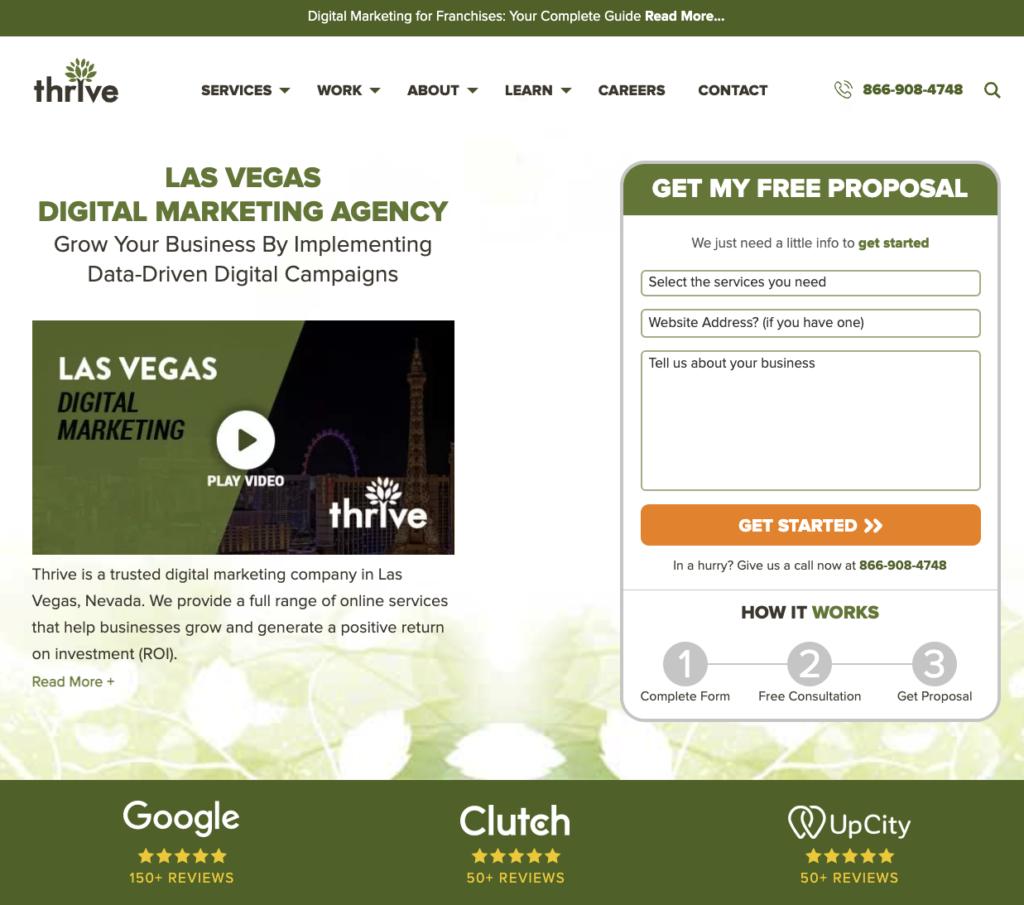Around 99% of customers looked up local businesses on the internet in 2021.
Whether your customers are looking for a new restaurant to try or they’re trying to find a salon near them, they’ll probably turn to Google to help them out. And after discovering a local business, they’ll want to know more about it before they decide if it’s the best one for their needs.
So, if you want to run a successful local business, you need to make sure that your business has a rock-solid online presence. And to do that, you need to invest your time and efforts in local marketing.
If you’re running a local business in California, you need to make sure that your marketing efforts allow you to reach people in California. But, it’s not always that simple. Eventually, you might want to expand into different locations. Maybe you’ll decide to open another shop in a new state—or even just a few cities away. If (or when) that time comes, you need to make sure that your marketing strategy will support you; you need a strategy that’s scalable.
That’s what multi-location marketing is all about.
To help you navigate the realm of multi-location marketing, we’ve put together this blog post, where we’ll go over the basics of multi-location marketing, and we’ll share 4 tips that will help you get started.
What is Multi-Location Marketing?
A Forrester study shows that over 61% of multi-location marketers think improving their local marketing’s effectiveness should be their top priority. Whereas, nearly 77% complained that executing localized scalable programs is one of their biggest challenges.
A good multi-location marketing strategy will help you cater to and give dedicated attention to each of your storefronts, allowing you to deliver a smooth experience to your customers across different locations.
When you run a multi-location business, a few questions to consider are:
- Do all of our storefronts offer the same products or services?
- Are our locations spread out from county to county or state to state?
- Do we offer any location-specific products or services?
In order to put together a solid multi-location marketing plan, you need to get clear on where you’re trying to grow and then implement that knowledge into every aspect of your marketing efforts.
Let’s say you run a bakery in California, and we’ll assume that you have a solid online local presence that helps you attract hundreds of customers to your shop every week. If you want to expand your venture by launching stores across different states, then you may have to start focusing on these individual locations from scratch.
While your first impulse may be to target generic keywords like “world-class bakeries” or “best bakeries”, ranking for these kinds of keywords is—honestly—nearly impossible. It’s much easier—and more effective—to rank at the top for location-specific keywords like “bakeries in San Francisco” or “best treat shops in San Diego.”
Similarly, if you are planning to run ads, you need to make sure you’re creating dedicated PPC ads for different locations. And the same applies to email marketing and other marketing efforts.
That being said, let’s take a look at four tips local businesses should use to build a seamless multi-location marketing strategy.
1 – Implement Guidelines for Each Location
Even though you may be selling the same set of products or offering the same services across different locations, you need to have clear-cut guidelines for every location. This might include:
- Creating location-specific buyer personas
- Finding community interaction opportunities
- Digging into local search gaps and opportunities
- Compiling location-specific competitor lists
And remember, these guidelines should contribute to building a consistent brand image. Imagine a brand like McDonald’s was offering totally different products and services in two different cities—it would be confusing and a little off-putting, right?
Because consistency is so crucial, when expanding across different locations, it’s really important to have a dedicated brand guide in place. This will help you ensure that while things might look slightly different at each location, there is still a set of guidelines in place to help maintain consistency at every store you open.
2 – Create Location-Specific Pages on Your Website
Let’s talk websites.
The good news is, if you want to target different locations, you probably don’t need to have a dedicated website for each one. You should create location-specific pages for each of the locations to which you cater, though.
Thrive Agency does a good job with this. They offer digital marketing services across different locations. In their website footer, you’ll find hyperlinks to their individual location pages. Upon clicking one of the locations, you’ll be redirected to the appropriate landing page. Take a look at their Las Vegas page:

A few benefits of creating location-specific pages include:
- It helps your local customers easily discover your business.
- It allows you to offer location-specific news and updates.
- It positions your individual storefronts as unique.
And since you’ll be targeting location-specific keywords rather than general keywords on each of the location pages, you’ll have a much better chance of ranking high.
Along with this tip, we’d strongly advise you to add a map on every location page so your customers can easily find the storefront that is nearest to them.
3 – Build Location-Specific Google Business Profiles
You may have already created a Google Business Profile for your existing location. But, if you are expanding across different locations, then you shouldn’t use that same Google Business Profile for all your business locations. Instead, it’s advisable to create location-specific Google Business Profiles.
Why? Because different locations will likely have:
- Different Phone Numbers
- Different Operating Hours
- Different Addresses

Furthermore, you may want to share local updates, and having location-specific Google Business Profiles allows you to do just that.
If you don’t have dedicated pages for different locations, it will be difficult for people to find you and you’ll risk losing potential customers.
4 – Keep These Social Media Best Practices in Mind
Even though your business has multiple locations, it’s not always ideal to create individual profiles for every location. But, if people from different cities or states will all be viewing the same social media profile, it’s important to follow a few best practices to avoid any confusion.
- If you only have one profile for all locations, when publishing a post, make sure to note which location the post belongs to. If you’re posting about a deal that is only valid at a specific location, it’s important to be clear about that.
- If you do decide to create location-specific social media profiles for your brand, be sure to clearly note which account belongs to which location. Swig, for example, includes their location in their Instagram handle.

- Create a brand style guide to ensure consistency across all accounts.
- Craft and implement location-specific campaigns to target your different audiences appropriately and effectively.
Level Up Your Local Marketing Game
If you serve multiple locations—or if you’re thinking about expanding—your marketing strategy will likely need some adjustments.
By building a scalable marketing strategy that allows you to easily break into new markets and target new locations, you ensure smooth expansion.




